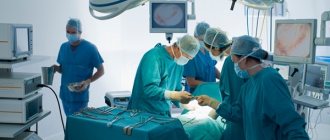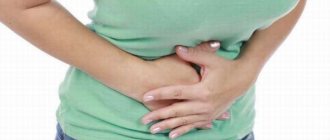Many people turn to a doctor when the destruction of the internal structure of the bones begins to cause them serious problems and interferes with their ability to live and work fruitfully. First of all, this disease threatens the fair sex during menopause. With this disease, a fracture of the femoral neck, ankle or wrist bone may not heal for a long time, or there may be a high probability of ending up in a wheelchair for the rest of your days. In the event of a spinal fracture, even more so, we risk becoming bedridden. And therefore, prevention of osteoporosis during menopause is extremely important for you, dear ladies!
Causes of osteoporosis in women
In a young body, up to the age of 30, the mass of bone tissue constantly grows, the skeleton becomes stronger. From 30 to 50 years, it is approximately at the same level, that is, the restoration of minerals in the bones compensates for the leaching of calcium and other substances.
But after 50 years, with the onset of menopause, hormonal levels change, and a failure occurs in the body’s phosphorus-calcium metabolism. Bones gradually lose density and become porous. During the first year after menopause, bone mass drops by up to 10%! In subsequent years of life, 2-5% of calcium is lost per year. There is a need to replenish the loss of minerals in order to lead an active lifestyle for the rest of your days.
There are other causes of this disease in women, and bone loss can begin long before menopause. Osteoporosis risk groups:
- Taking antitumor drugs, radiation therapy, treatment for diabetes, certain groups of antibiotics. Many of the above reasons harm your bones and contribute to their thinning.
- Lack of movement and physical activity affects general health and metabolism.
- Diseases of the gastrointestinal tract, and, as a result, metabolic disorders.
- Smoking, alcohol abuse, excessive amounts of coffee, drug addiction.
- An operation to remove female organs, which leads to hormonal disruptions.
- Diseases of the endocrine system.
- Rheumatoid factor.
- There are many pregnancies and childbirths, long-term breastfeeding, which also leads to a lack of minerals in a woman’s bone structure.
How not to be late in diagnosing osteoporosis?
This disease is hidden from us for a long time, and at the beginning of the disease there are no visible symptoms. Calcium loss occurs unnoticed, but when the lack of building material in the skeleton reaches a critical level, the disease begins to manifest itself.
In the early stages of the disease, osteoporosis can masquerade as joint diseases, and it cannot be recognized without special tests. But don’t be afraid of this, because preventing the destruction of bone tissue is possible and practiced in the modern world.
You don't have to wait until you break your femur or radius and an x-ray reveals that you already have advanced osteoporosis. Detecting the beginning of bone thinning when calcium loss is only 5% is real! At your healthcare facility, your doctor may prescribe the following methods to determine your likelihood of illness:
- biochemical analysis of blood and urine;
- ultrasound diagnostics;
- special isotopes that are injected into the blood and subsequently examined using special equipment;
- computed tomography;
- various genetic studies;
- X-ray densitometry, that is, determination of bone tissue mass.
Diagnostics
Diagnostics has several objectives:
- Verify decreased bone density. Bone densitometry is used for this. This is a non-invasive technique to quantify bone mass and density to predict fracture risk. Currently, X-ray and ultrasound densitometry are actively used, and quantitative computed tomography is also possible. MRI is not considered a basic examination for osteoporosis, although this technique makes it possible to accurately assess the microarchitecture of bones and create mathematical models of the patient’s changes.
- Confirm the fact of fractures. Plain radiography and computed tomography are suitable for this purpose.
- Identification of pathogenetically significant deviations in hormone levels and mineral metabolism disorders characteristic of menopause and the postmenopausal period. For this purpose, tests may be prescribed for estrogen, parathyroid hormone, calcitonin, thyroid hormones, vitamin D, and to determine the level of calcium and phosphorus in morning urine and blood serum.
- Assessment of the nature of bone metabolism and the activity of the bone resorption process. Biochemical markers in this case are osteocalcin, bone alkaline phosphatase, pyridnoline, hydroxypronoline and a number of other compounds. But such diagnostics are rarely used in everyday clinical practice.
- Rule out other causes of osteoporosis. For this purpose, studies may be prescribed to assess the state of the gastrointestinal tract, the activity of existing systemic diseases, kidney function, and others.
Let's get acquainted with the symptoms of a progressive disease
The most obvious symptom is frequent fractures of the limbs, then, with age, decreased height, stooping, a “widow’s hump”, which is formed due to small fractures of the vertebrae, and bone pain. The patient cannot sleep peacefully in one position, experiencing pain and discomfort. All this leads to difficulties in movement, the inability to care for oneself, moreover, to a wheelchair, and even to premature death.
If your nails begin to break, peel, teeth crumble, hair is falling out a lot, periodontal disease has appeared, or you are experiencing night cramps, it’s time to sound the alarm and don’t delay in contacting a doctor about this.
Treatment of osteoporosis
Dear readers, we will not deceive ourselves that, as if by magic, our bones will become like those of 18-year-olds, but it is very possible to stop the destruction of the skeleton! There are two groups of drugs that restore hormonal balance in the body, which is beneficial for the absorption of minerals. Let's look at them:
- anabolic steroids, bioflavonoids, which stimulate the formation and restoration of bone structure;
- hormones that are derivatives of estrogen and progesterone. These are Atarax , Grandaxin , Sigetin , Dermestril (works great, comes in the form of patches, which is very convenient, used at the beginning of menopause and in the later stages);
- homeopathic forms of drugs and herbal remedies. These are the well-known Klimaksan , Remens , Klimaktoplan , Klimadinon , Inoklim , Tsi-klim and others;
- You should not miss out on calcium supplements that are important for you. Miacalcic (Switzerland), Calcium D3 Nycomed (Norway), Natekal (Italy), Kalcemin , which is intended to regulate phosphorus-calcium metabolism, have a pronounced effect Experts advise taking these medications with milk so that calcium is better absorbed. Everyone also knows Calcium Gluconate ;
- traditional methods of replenishing minerals in the bones are chalk and chicken egg shells. Egg shells are 90% calcium. To use it internally, it must be thoroughly washed, freed from the inner film, dried in a dark place so that the sun's rays do not fall on it, and placed in the oven for 10 minutes. Then grind in a coffee grinder and crush in a mortar to a powder. Before use, the powder must be mixed with lemon juice, and you need to add 1 drop of vitamin D, which is sold at the pharmacy. Take 10-15 days from 1.5 to 3 g per day with breaks between courses of 3 months;
- There is also an excellent method of combating this disease - magnetic resonance therapy. This physiotherapy procedure stimulates the natural regeneration of bones even with severe thinning, has no side effects and relieves pain. Studies have shown that within 10–12 months after magnetic therapy, 4–10% of bone tissue volume is restored! Many patients feel much better after a course of this procedure;
- devices have been developed that can be used to treat bone tissue and joints at home. These are various modifications of Almags , affordable and far from scarce.
Do not forget, dear women, that under no circumstances should you self-medicate! Find a good specialist who will help you choose medications and monitor the treatment process.
What to do about it
Unfortunately, in everyday clinical practice there is often a situation where, even after confirmation of an osteoporotic fracture that has already occurred, the patient does not receive any therapy. This is fraught with continued progression of the pathological process, lack of regeneration of the damaged bone, and repeated fractures.
But well-chosen treatment for osteoporosis during menopause can improve the processes of bone remodeling, reduce the patient’s pain syndrome and expand her motor capabilities. Therefore, therapy should be carried out to all women with a confirmed diagnosis, even before they develop complications. This tactic serves as a prevention of disability and helps maintain the social and everyday independence of elderly patients (in the absence of other reasons for their helplessness).
Which doctor treats osteoporosis during menopause?
An orthopedist, traumatologist, endocrinologist, rheumatologist can conduct an examination and prescribe adequate therapy; consultations with a gynecologist are additionally required. In this case, the basis of treatment is the prescription of medications, all other methods are auxiliary in nature. The drugs used for osteoporosis during menopause may belong to different pharmacological groups. And their combination with each other is often required to influence different stages of pathogenesis.
The main directions of treatment of menopausal osteoporosis:
- Hormone replacement therapy. It is carried out over a long period of time, with low doses of estrogens in combination with progestins or drugs with estrogen-like substances of natural origin. But after amputation or hysterectomy, estrogen monotherapy is sufficient.
- The use of other drugs with antiresorptive effects: bisphosphonates and calcitonins.
- The use of active metabolites of vitamin D, which as part of complex therapy helps to contain bone loss, improve regenerative processes after fractures, and even gradually increase bone mineral density.
- The use of agents that enhance the process of osteosynthesis. These include fluorides, growth hormone, androgens, and anabolic steroids. This therapy is used quite rarely.
- The use of osteoquin (ifriflavone) is a herbal product that has a clear analgesic effect and can have a beneficial effect on the balance of osteosynthesis and osteoresorption.
Traditionally, calcium supplements are prescribed for osteoporosis, although the clinical effect of such monotherapy is quite low. They may be in demand when the process of osteosynthesis is activated under the influence of other pathogenetic agents. But we should not forget about a common side effect in the form of a tendency to deposit salts in the urinary tract.
Prevention of osteoporosis during menopause
Women in Europe and the USA are trying to take care in advance that the onset of menopause does not turn them into frail old ladies. Starting from the age of 35–40, they regularly take hormonal medications, vitamins, take care of their bodies, and by old age they look much younger than our dear compatriots.
- Don't wait until you get sick! Beginning at the age of 40, take calcium supplements with vitamin D regularly. Remember that you should consult your doctor before starting treatment. Many medications, vitamins and even herbs have contraindications for their use.
- Replenish your diet with fermented milk products, fatty fish, vegetables, and fruits. An excellent source of calcium are foods such as natural yogurt, hard cheese, milk, cottage cheese, soybeans, apples, nuts, dried apricots, cabbage, sunflower and pumpkin seeds.
- Use fluoridated salt in small quantities, as fluoride is needed for normal calcium absorption.
- Avoid junk food: pickles, marinades, smoking, reduce the amount of fatty, fried foods.
- Spend more time in the fresh air, as the sun produces vitamin D in our bodies. That is why in the summer, when there is a lot of light and we are more in nature, many bone diseases subside and mobility increases.
- Do physical exercise, hard work, and swimming, which is part of the osteoporosis treatment system. It’s not for nothing that they say that movement is life!
- Try to overcome bad habits - overeating, drinking alcohol, smoking, abusing coffee and energy drinks, not to mention drugs.
- Set a goal to reduce weight so that there is less load on the body on the skeleton. The less we weigh, the less pain there will be from developing osteoporosis.
- Don't lift too much weight. Remember that you are a woman, not a loader!
- Drink up to 2 liters of water per day, this is important. This does not mean sugary carbonated drinks, which also help flush out minerals that are important to you. Even tea removes calcium!
- Eat less red meat: eating too much of it is dangerous for the health of your bones.
Having studied all these facts, we see that osteoporosis in women during menopause is not a death sentence. The main thing that is required is to go to the hospital on time and follow all the doctors’ recommendations. And don’t let this terrible disease scare you, because the knowledge gained in time will help you fight it. Well, if you are healthy, then now you know what you need to do to keep your bones strong.
Interesting video on this topic:
About
Symptoms
Back pain may indicate the development of pathology
At the beginning, the disease usually goes unnoticed. However, there are a number of signs that can indicate the development of osteoporosis in women during menopause.
Signs noticeable to humans
Despite the latent course of the disease, it can be detected by certain manifestations. Visible symptoms of osteoporosis during menopause include:
- a decrease in height of 2 centimeters over the current year or 4 centimeters over the past few years;
- increasing the thoracic curve and straightening the lumbar (the back becomes like a hook with a rounded upper part);
- change in posture: the stomach protrudes, folds appear on the sides of the chest;
- shuffling;
- pain in the back, upper and lower extremities.
Hidden signs
In addition to obvious signs of osteoporosis, there are also hidden ones. An X-ray examination can show:
- rarefaction of the X-ray shadow;
- thinning of the outer layer of the vertebrae;
- disappearance of the pattern formed by bone plates and septa (vertebrae appear empty);
- an increase in vertical striation inside the vertebrae against the background of a decrease in transverse striation;
- anterior and posterior wedge-shaped deformation of the vertebrae, “fish” vertebrae;
- manifestations of compression in the area of the first lumbar, eleventh and twelfth thoracic vertebrae;
- calcifications in the aorta.











